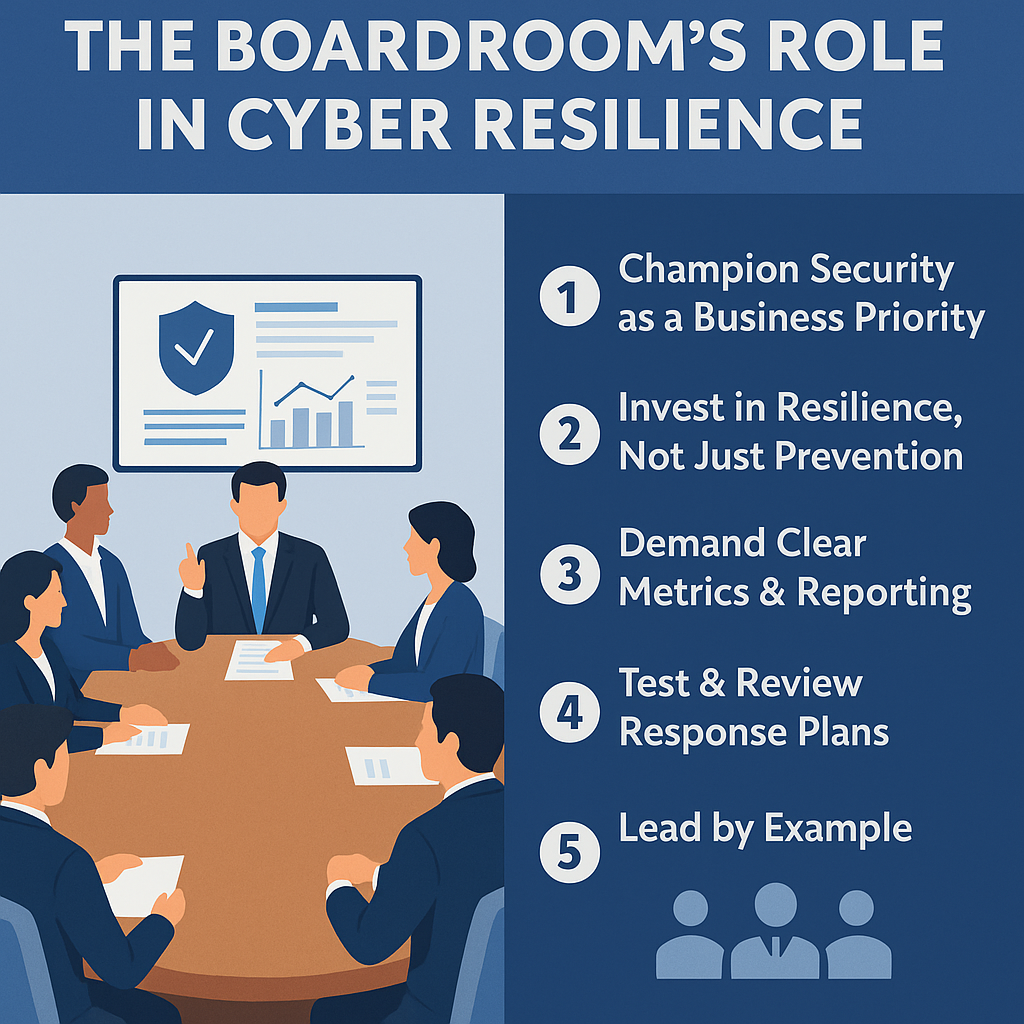
Cybersecurity has moved far beyond being an isolated IT function — it is now a critical business risk that requires executive oversight. True resilience means the ability not only to prevent incidents but also to respond, recover, and adapt quickly when they occur. The boardroom plays a pivotal role in embedding this resilience into the organization’s DNA.
1. Champion Security as a Business Priority
Boards should recognize cybersecurity as integral to business continuity and brand protection, not merely a compliance checkbox. When leadership communicates its importance, the message cascades down the organization.
2. Invest in Resilience, Not Just Prevention
Prevention is vital, but resilience requires additional investment in recovery strategies, data redundancy, and tested disaster recovery plans.
3. Demand Clear Metrics & Reporting
Regular reports with measurable indicators — such as time to detect, time to respond, and business impact assessments — help boards make informed strategic decisions.
4. Test & Review Response Plans
Tabletop exercises and incident simulations should be standard practice, with board members actively involved to understand both the process and the gaps that need closing.
5. Lead by Example
When board members visibly practice good cyber hygiene — from secure communications to responsible data handling — it reinforces security culture throughout the organization.
Conclusion
Cyber resilience begins at the top. Boards that engage actively in security governance set the tone for a culture of vigilance, preparedness, and trust — safeguarding not only technology but also people, processes, and the future of the business.